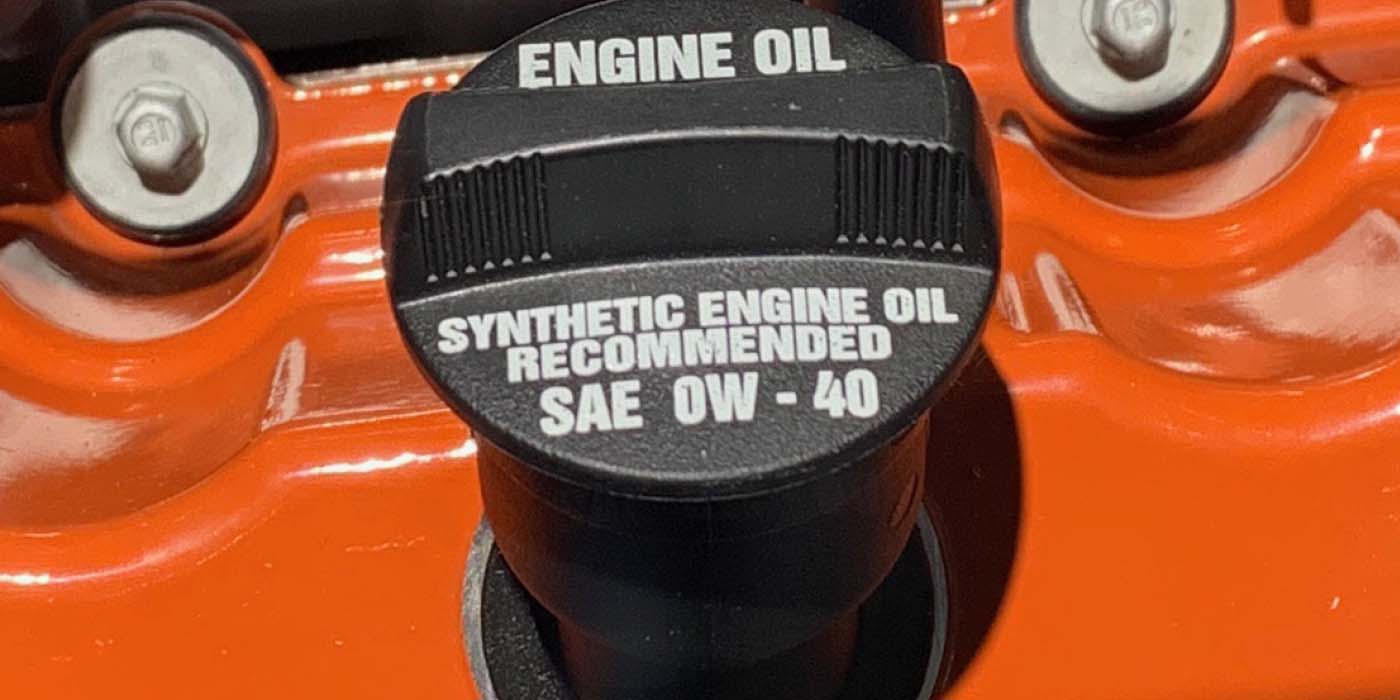I recently got talking to a lawyer about warranties for domestic vehicles and why the word “recommends” appears in the service information when it comes to oil changes. He answered that, legally, the manufacturer can’t use the word “requires” or “must” when it comes to engine oil. This softening of the language is because the Magnuson-Moss Warranty Act permits oil changes outside of a dealer without voiding the warranty.
But, to some drivers and shops, the word “recommends” means that it is only a suggestion. The reality is that the oil specification is issued for good reasons.
When Ford, GM or Chrysler specify an oil for their vehicles, that recommendation comes down to three items. First, the oil must match the algorithms for the oil life monitor system. Second, the viscosity must match, because the wrong weight can cause mechanical systems and emissions. Third, many manufacturer-specific formulations are designed around the engine. They may have developed a unique test focused on carbon deposits or turbocharger wear.
Oil Life Monitors
GM’s oil life monitor made it onto many of the 2007 model year vehicles. The system has an algorithm that looks at many parameters from the ECU and other information, including ambient temperature.
In 2007-’12 models, the oil change interval could range from 4,000- to 12,000-miles. For 2013-current models, GM has limited the interval to 7,500 miles. Some drivers nearing the 7,500-mile interval may have a lot of life displayed, only to see it drop to zero when they pass the 7,500-mile interval.
In 2008, Chrysler started using intelligent oil life monitors on a limited number of vehicles. Today, most Chrysler and Fiat vehicles have an oil life monitor. Resetting can be performed with the EVICs (driver information display and menus) or with the keys, buttons and gas pedal. Most of the intervals with the Chrysler system are capped at 10,000 miles. Some vehicles have a monitor that is set at a preset interval like 4,000 or 5,000 miles for some turbocharged Multiair engines.
In 2011, Ford put the Intelligent Oil-Life Monitor (IOLM) on some gasoline-powered models. Most of the EcoBoost models were first to receive the IOLM. Some 2006-’10 models do have a mileage-based oil life system that can be reset with the trip computer inputs. These are typically based around a 7,500-mile oil change interval.
If it’s been more than a year since last oil change, the IOLM will display a reminder message, regardless of mileage.

OE Oil Specifications
Ford structures oil specifications around the weight of the oil. The WSS specifications for gasoline engine oils were last updated in 2012. WSS-M2C945-A and WSS-M2C946-A oils typically meet API SN GF-6 standards with a few additional tests performed on Ford engines. These standards cover 5W-20 and 5W-30 oils. WSS-M2C947-A approved oils are for 0W-30 oils and are typically synthetic. Ford WSS-M2C948-B is the specification for the 1.0 liter, 3-cylinder EcoBoost engine.
Chrysler has three proprietary oil specifications for gasoline engines. They call these standards Chrysler Material Standards or MS specifications.
The first specification is MS-6395 that covers 5W-20, 5W-30, 5W-20 and 10W-30 oils. This standard follows the API SN GF-5 standards with a few additional tests for Chrysler engines. Most GF-5 approved oils meet these standards. The MS-10850 specification is for SRT8, SRT10, and SRT6 engines that call for 5W-40 oil. MS-12633 approved oils are for SRT engines that specify 0W-40 oil.
GM Dexos1-Gen 2 approved oils are recommended for all 2011 and newer GM vehicles with gasoline engines. They are designed to work with the oil life system in GM vehicles. These oils are engineered to reduce carbon deposits in the combustion chamber that can occur in some Ecotec engines. The oil will also work in GM vehicles older than 2011.
GM revised Dexos1 specifications in 2015. Oils that meet this standard are often labeled Dexos1 Gen2, but many oils do not include the Gen2 on the label due to confusion with Dexos2 oils for diesel engines. Dexos1 Gen2 oils are formulated to reduce incidents of low-speed pre-ignition (LSPI).
Oil Conspiracy Theories
Some people believe that older oil formulations are better for modern domestic cars and trucks. They believe there is a conspiracy against them to remove precious zinc and other additives that can protect their engine. They believe that the new oils are just designed to get the vehicle to the warranty period and to pass EPA tests. They use oil that is intended for an older diesel engine that contains higher levels of zinc and phosphorus.
The reality is that many of the new oils on the market have better additive packages that are designed for modern gasoline engines. The additives that replaced zinc and other chemicals outperform older formulations. They also have additives that can withstand longer oil change intervals. Many OE oil specifications are built around engine technology like turbochargers, direct-injection and variable valve timing actuators.
So when an OEM writes the word “recommends” in the service information or owner’s manual, it should be read as “required.”






